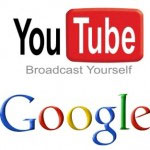
Anyway, I was up second and I arrived in the middle of the presentation by a high-ranking member of the Google sales team. The presentation was interesting, but two slides really caught me off guard.
First, there was a YouTube slide that showed usage by age. The key take-away was that a very, very large percentage of their viewers/users are over the age of 35. From the data presented, it looked like teens under-indexed by a pretty large margin as well. Which begs the question, “If teens are not watching TV and they’re not using YouTube, where are they?”
The obvious answer is playing video games, but that answer doesn’t correspond with observed daily life. Sure teens play video games, but do they do it for four to five hours a day? Hummm…
The next, even more interesting slide was Google’s/YouTube’s re-definition of Primetime. In YouTube’s experience, primetime is Saturday afternoon and they experience very high usage levels during the business day as well.
At first, this data does make intuitive sense. Most businesses have better broadband connectivity than people have at home. If you receive an email link to a video snack, why not consume it at your desk. But what about Saturday? Is it possible that people are willing to wait to the weekend to watch short form video? That was the conclusion the Google sales team drew from the data. Google has redefined primetime.
For the past few years, people who are schooled-in-the-art have posited that primetime is so named because, on average, the highest HUT levels (houses using television) occur in the evenings after dinner and continue until bedtime. This time is by far the most valuable and it is when broadcasters charge the most money to sponsor shows. In fact, primetime on Thursday evenings is almost always the most coveted and most premium advertising time in any given week. (Send me an email if you know why? Media buyers and TV execs are not eligible to clog my inbox.)
If Google’s data is correct, we can draw a few conclusions of our own. First and foremost, TV is not dead! YouTube users and TV viewers consume media differently. It is not an either/or scenario, both can happily co-exist. This is a conclusion that I, and many of my peers, came to a decade ago so it’s nice to have some quantitative data to back up the hunch. The Internet is to content providers what VHS was to movie companies – simply an additional source of revenue.
Second, the kids are missing — at least from a measurement perspective. Is this really true? My kids watch TV, play video games and use the Internet with wild abandon. In fact, all of their friends do too. It’s not a scientific survey by any means, but I’ve never met a parent who told me that their teen-aged kids don’t consume media. Have you? Why can’t we measure their usage at least as well as we measure other age groups?
The alternative explanation, that the kids are really not consuming media as much as we think they are is all but incomprehensible. But what if it’s true? Have comic books made a comeback or is there some sports or fitness craze happening that we’re all oblivious to?
I don’t think so. What may be happening is that this younger audience is so niche fragmented that it cannot be accurately measured using the techniques available today. And, if I was asked to place a bet, that’s where I would place it. I have often been quoted strenuously disagreeing with Chris Anderson’s financial conclusions with regard to the Long Tail. However, he and I absolutely agree on the sociological implications.
This is a generation of digital natives and they have grown up with technology that empowers virtually infinite choice. It makes sense that they are using it. What this means for the media business is still unclear. There are some who think that just offering content online and on mobile will take them where they need to go. Others are adopting a wait and see attitude. Then there are the extraordinary few who are trying to create the future — I would watch them. Is it going to be Joost, Network2, Next New Networks, BitTorrent or someone or something we’ve never heard of?
The answer is all of the above. My key take-away from Google’s sales deck is that this is the most exciting time in the history of our business. I’m just worried about my fragmented kids. ![]()